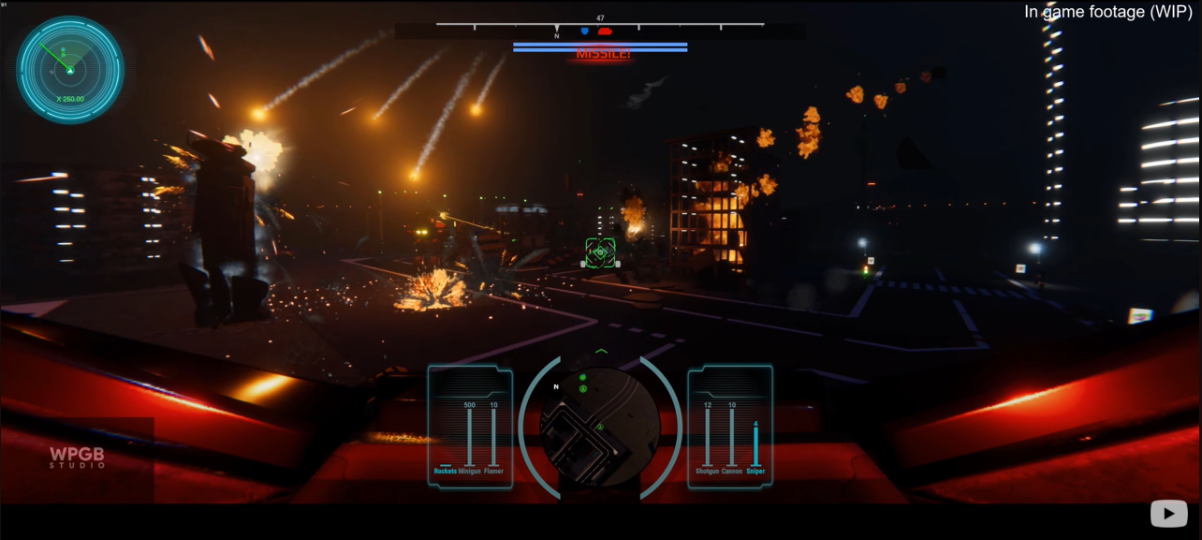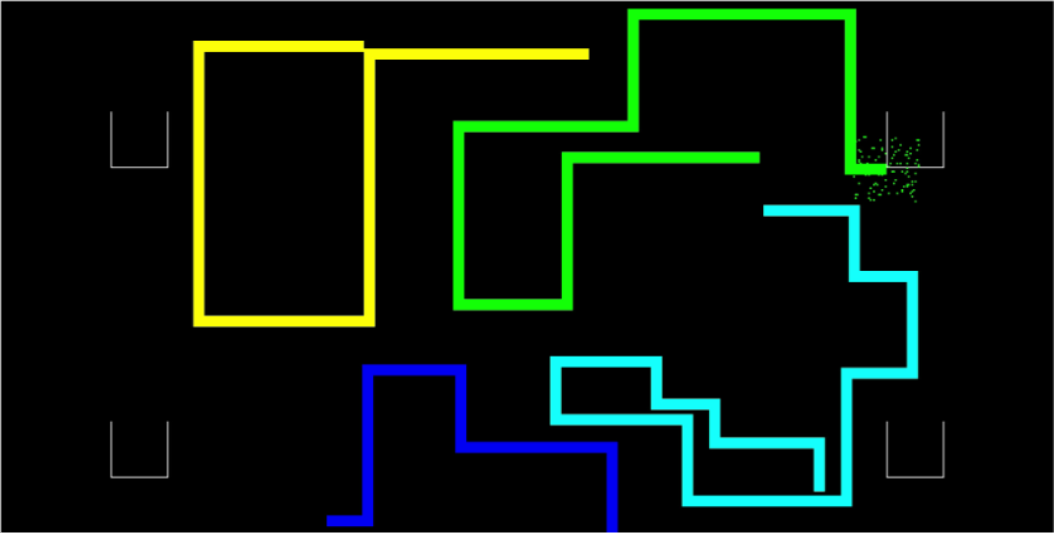THE DEV BLOG PART 1
My game development adventures three years on and how I went from this:
To This:
Introduction
This is a tale of throwing all the common practices and rules straight out the window, embracing the ethos of having absolutely no idea what we are doing and encapsulating the embodiment of unashamedly winging it.
It’s July 2021, still imprisoned due to the Covid lockdown mandate and facing a decision on how I want my life to pan out. The girlfriend and I have only just recently moved to a bigger apartment with a more spacious ‘man cave’. Two paths fork tantalisingly in front of me; become a reactionary YouTuber or revisit my childhood experiences of making and playing computer games.
I chose the latter.
Getting Started
Initial Inspiration and Motivation
A good friend of mine, a 3D artist and fellow avid gamer, posted a picture of some art he made using Blender. It was a cool-looking mech looming ominously over a rubble-strewn post-apocalyptic hellscape. It was awesome. Long-dormant neurons in my brain started firing uncontrollably, and visions of early 90s games flashed before my eyes:
Showing those Inner Sphere weaklings that this filthy clanner is here for business, one AC 20 at a time in MechWarrior 2.
Spreading my corporate megalomania across the globe, indoctrinating innocent civilians to take up arms and fight alongside my highly modified cyborg agents in Syndicate.
Living my armchair general fantasies and revelling in the FMV hammyness in Command and Conquer.
Laughing at the comedic, hyper-violent, and politically incorrect title screen of Cannon Fodder.
I nostalgically began to reminisce about coding in BASIC early on in my childhood, programming games like Light Cycles. In this game, one person controls a blue line the other controls a green line, much like the film Tron but…very basic. (Pun intended). This was way back in the time fog of the early to mid-80’s. (Yes, I am getting on a bit)
There are hundreds, if not thousands, of games I have played and taken inspiration from. I could write up a whole separate account on all those games, but let's get down to brass tacks—you want to know about the game development journey, right?
Image: Simple Light Cycles on Steam: To a ten year old me, this was some cutting edge shit!
Early Research and Learning Resources
This section you will be expecting a useful list of resources, tutorials and guides I followed, yes?
Nope. I jumped in with both feet like an undisciplined moron and downloaded the Unity Engine.
This is in no way advice. Don’t do this. I only took a cursory look at documentation and followed a few YouTube videos. (I will link to some standout creators that helped at the end of this article).
Armed with nothing but the Unity game engine and a dream, I contacted my good friend KzA on Steam and said, 'That 3D art you did is sick, mate. Want to make a game?' This was the start of something magical. An almost unholy alliance of two like-minded, sarcastic, sardonic, and driven individuals. The stage was set, the pieces in place, and nothing could stop us.
Nothing could stop us but this bloody learning curve.
So, it turns out—now this will sound wild—but it turns out modern game development and coding is bloody difficult. Especially since the last time I touched anything resembling C# was coding in BASIC at the age of 10. Also, what’s with all these options in Unity? What the hell is the use of creating materials? What is a .fbx model? Why are there so many different screen layouts? Why do I need a global light in this scene? (More on this later, including a hilarious conversation between me and KzA, with him trying to explain to me why light is important). A render pipeline? What the hell??!
With my tail firmly between my legs and my hubris mercifully checked, I came to the realisation that baby steps were needed and the HelloWorld method was required. I downloaded a free asset of a mech model from the Unity Asset Store and got to work learning. After hours of research and days of trial and error, I had a mech, some terrain, and the most rudimentary point-and-click movement system with NavMesh pathfinding. It was primitive but surprisingly functional and one of the best things I had seen in years—no, scratch that—decades. I was hooked but, like any meth-starved junkie, I needed more.
Going by the numbers and tooling.
As the saying goes, a bad workman blames his tools. One of the first tooling decisions to make was which IDE to use. I went for the standard Visual Studio and began the task of integrating it into Unity. This was not as straightforward as you might think—something something correct libraries, something something ILC2PP. At the time, this went way over my head, but with perseverance, I got it working. Next up: which render pipeline to use?
At the time, Unity had three flavours of graphical rendering:
Unity Built-in Renderer
URP (Universal Render Pipeline)
HDRP (High Definition Render Pipeline) or, as I call it, (Holy Dogshit Really Pretty)
Initial development of our game, Crimson Incursion, started in the URP pipeline. I can regale you with tales of importing models that KzA had created in Blender and me not having the foggiest clue about the difference between a normal map, a base map, and a mask map. KzA, vastly more experienced in 3D rendering, helped me understand with great patience and tolerance until the correct synapses made the everlasting connection in my noggin where it just clicked. Remember earlier I mentioned the hilarious global lighting tale? Oh, we will be getting to that. This is what they call in the industry foreshadowing and gives a wonderful insight into how my brain works.
I had been experimenting with HDRP, and its graphical capabilities were vastly superior to the URP pipeline, especially the lighting. The decision was made to upgrade the game to HDRP using Unity’s upgrade process. As I am trying to keep this fairly light on technobabble, I won’t bore you with the details, but this process was a little bit sketchy. Missing textures and the dreaded pink scene plagued the upgrade process for a while.
Image: The pink horror of missing textures. This is fine..
WPGB LIVES!
News!
As from 06.06.2024 WPGB Studio is officially a company and a Steamworks partner. Currently setting up the Steam page. Will be available soon™







